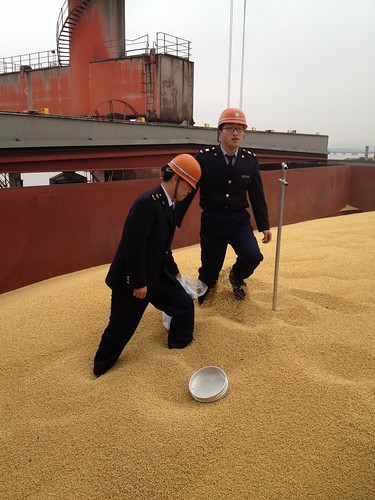
International trade is a major factor in the American agricultural economy. A key player is China. In fact China’s impact on slowing growth on trade and agriculture is a session topic during the 2016 United States Department of Agriculture’s Agricultural Outlook Forum.
Over the last two decades, China’s economic prosperity and increased consumer demand for food has significantly contributed to the record growth in United States agricultural exports. From fiscal year (FY) 2000 to FY 2015, the value of U.S. agricultural and related exports to China rose from $1.7 to $25.9 billion dollars. Currently, nearly 17 percent of all U.S. agricultural exports are destined for the Chinese market. These export figures highlight the critical importance of the U.S.-China trade relationship for U.S. agriculture and underscores the United States interest in China’s ability to maintain a strong and stable economy.
Several U.S. agricultural sectors have capitalized on the market opportunities created from China’s economic growth. Traditionally U.S. exports to the country were dominated by land-intensive bulk commodities that were processed for domestic consumption or re-exported. Recent increases in Chinese consumer purchasing power and improved standards of living have generated new demand for luxury items and ready-to-eat foods.
Looking forward, many of the macroeconomic conditions traditionally signaling long-term growth and trade expansion readily exist in China. An increasingly urban population, a burgeoning middle class, and higher disposable incomes have increased Chinese consumers’ ability to diversify diets and purchase high-value, protein-rich foods. Additionally, growth in China’s food consumption is forecast to outpace its domestic agricultural production by more than two percent per year between 2015 and 2020, resulting in an increased demand for food imports (IHS Global Insight).
U.S. trade with China has been rewarding; however, China’s economic slowdown, subsequent reforms, and recent decline in U.S. exports to China have raised legitimate concerns among agricultural stakeholders about the potential impact to U.S. exports in the near and distant future. China’s Gross Domestic Product (GDP) growth is projected to drop to 6.1 percent in 2016, their lowest level since 1990. Moreover, China is pursuing a variety of economic and regulatory policies that promote agricultural self-sufficiency and protect domestic industries. Finally, whether directly or indirectly triggered by the recent economic slowdowns in China, a majority of U.S. agricultural exporters have experienced severe decreases in sales to the region over the last year. Total FY 2015 U.S. farm exports to China are down approximately $4 billion or 13 percent from the previous fiscal year and are projected to drop even more in FY 2016. Collectively, these events have created uncertainty within the global agricultural marketplace and have caused broad speculation on the future of U.S. trade with China.
USDA’s 2016 Agricultural Outlook session on “China: Impacts of Slowing Growth On Trade And Agriculture” comprises a panel of distinguished experts who will further explore the implications of China’s slowing economy and provide keen insight on the prospects of trade between the United States and China. You can find out more about the USDA 2016 Agriculture Outlook Forum at www.usda.gov/oce/forum/index.htm.
